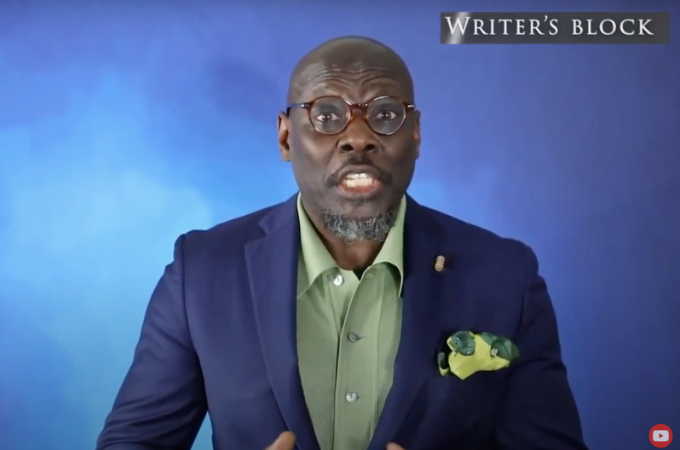
The latest episode of Professor Ato Quayson’s vlog Critic.Reading.Writing is perfect for those whose New Year’s resolutions involve finally finishing, or starting, that writing project!
As the author of six monographs, nine edited volumes, and over 100 journal articles and book chapters, Professor Quayson has an entire career’s worth of practice and advice to share with budding writers and rising scholars. Below are four key takeaways from his vlog episode, “On the Art and Practice of Writing.”
On Finding A Writing Rhythm
The first step in establishing a writing rhythm is deciding upon a location and controlling the conditions of your writing environment. Quayson prefers to write in his home or work office with the door closed to block out distraction and interruptions. The second step is to plan precise time slots for writing. The professor shares that he writes from 3 AM – 6 AM, 11 AM – 1 PM, and 3 PM – 5 PM every day. Having kept this writing rhythm for the past 25 years, Quayson’s third piece of advice is never to shift from your established writing rhythm.
On Writing Every Day
Writing every single day is a common piece of advice given by academics and creative writers alike, but how realistic is it to make daily progress on a chapter? For this tip, Quayson recommends making your annotated bibliography your best friend. The professor suggests building an annotated bibliography for each chapter as “the means by which you curate your own thought processes” and unveil a “pattern of discovery across primary and secondary sources.” With this piece of advice, Quayson reinforces the continuous feedback loop between reading and writing.
On Overcoming Writer’s Block
Even a widely published scholar such as Ato Quayson experiences writer’s block, particularly when embarking on projects in fields where he is less familiar. To overcome the anxiety of beginning, Quayson reads pieces from authors who are very difficult to understand and completely unrelated to his current project. He lists philosophers such as Theodor Adorno, V.Y. Mudimbe, Walter Benjamin and Ludwig Wittgenstein as examples. Quayson explains that the rewarding process of reading and thinking through difficult texts triggers one’s own curiosity and desire to write as a means of discovery.
On Editing Your Own Writing
Finally, you’ve written a few hundred or even a thousand words! How do you keep up the momentum? Quayson’s final tip is called “the ebb-and-flow mode of writing,” in which he prints out his draft and makes revisions and marginal notes by hand before typing the revisions. The professor repeats this process for each section of the draft until he has combed through the ideas several times and is satisfied with how they are expressed. This process is “designed to activate the skeptical interlocutor inside of your own mind whose purpose is to open up different reservoirs of thought. In this way, you will write every day and write well too.”
Click below to watch the full episode!
Critic.Reading.Writing with Ato Quayson is the show for booklovers hungry for meaningful conversations about books.
New episodes of Critic.Reading.Writing with Ato Quayson will be posted every Saturday.
In order not to miss out on any updates, follow Prof. Quayson on Instagram @critic.reading.writing, Facebook, and Twitter. Don’t forget to subscribe to the channel on YouTube!









COMMENTS -
Reader Interactions